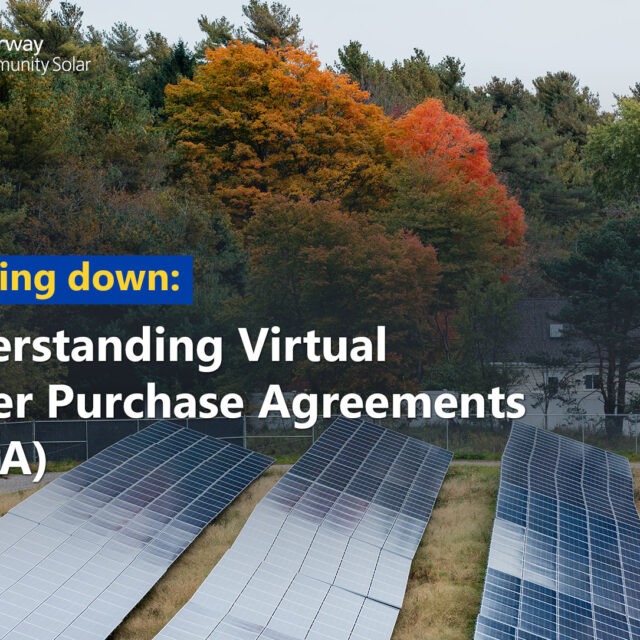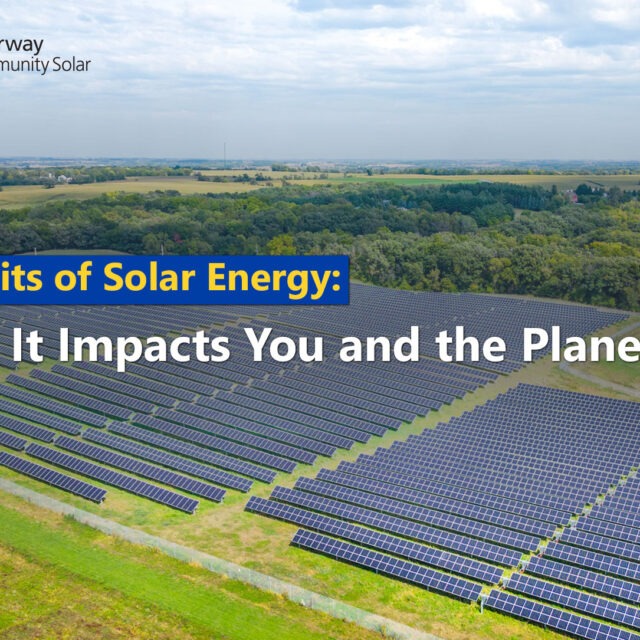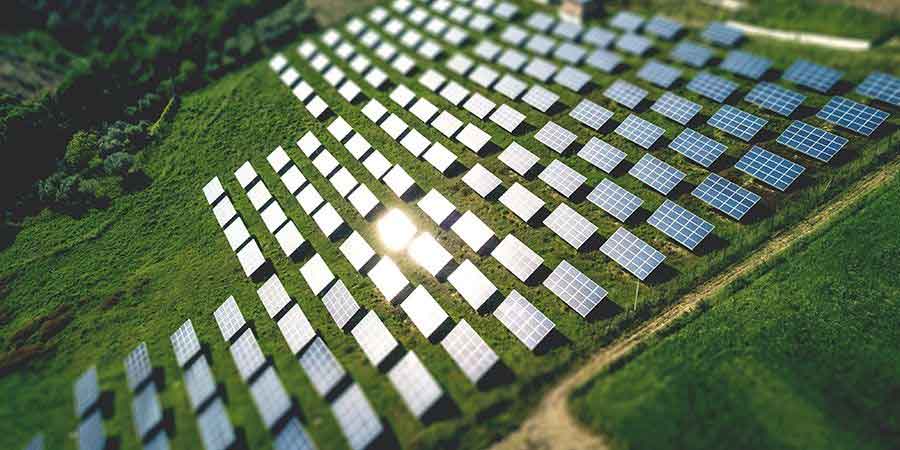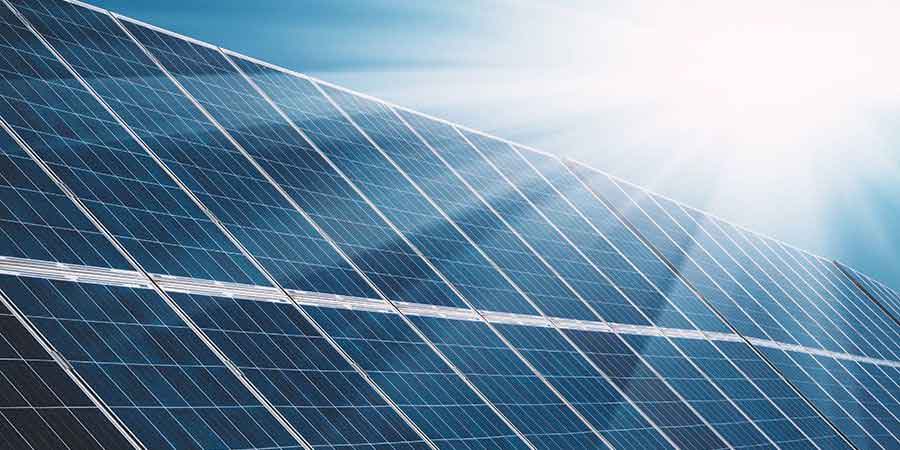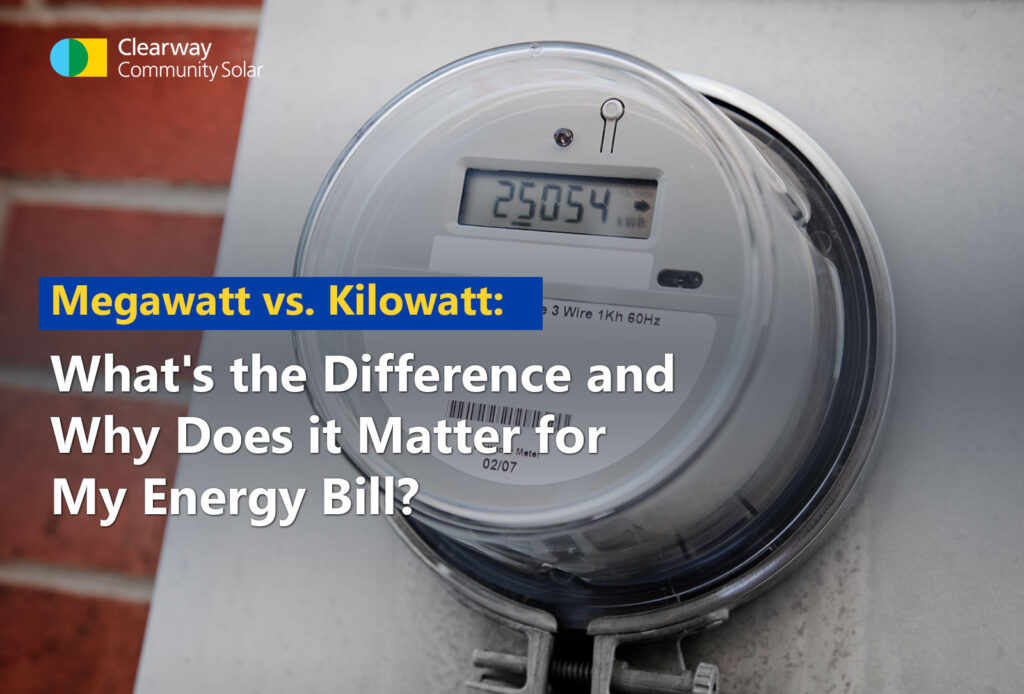
If you have started doing research on switching to solar power, you might have noticed phrases like “calculate your home’s wattage,” “kilowatt,” “megawatt,” and others getting thrown around. Understanding these concepts may feel technical at first, but they’re key to learning how much electricity you use and how switching to solar power can improve your energy efficiency.
Solar power is now one of the least expensive energy options on the market. In fact, people save anywhere from 5% and 20% on their electricity bill by switching to community solar programs. Keep reading as we break down the basics of wattage and energy bills so you can better understand your electricity consumption and decide if subscribing to community solar is a smart option for you.
What Exactly Watts, Kilowatts, and Megawatts Are
A watt is the smallest unit of power and represents the rate at which energy is used or generated. Think of it like speed — it shows how quickly energy is flowing. For example, when you turn on a 60-watt lightbulb, it consumes 60 watts of power while it’s lit. This is a simple, everyday unit of measurement that applies to devices and appliances around your home.
Now imagine you have ten 100-watt lightbulbs all turned on at the same time. Together, they use 1 kilowatt of power (10 x 100 watts = 1,000 watts). If those bulbs stay on for one hour, you’ve consumed 1 kilowatt-hour (kWh), which is how your electricity usage is tracked on your utility bill. Kilowatts are a practical way to measure the energy needs of your home or small businesses.
A megawatt equals 1,000 kilowatts or one million watts. While kilowatts are great for understanding energy at home, megawatts come into play when you’re talking about larger-scale systems. For instance, a solar farm or a power plant might generate several megawatts of power to supply electricity to hundreds or thousands of homes.
How Kilowatts and Megawatts Relate to Your Home’s Energy Consumption
Your home’s energy use is typically measured in kilowatt-hours (kWh). This metric reflects the amount of energy you use over a period of time. Your energy bill is, therefore, usually based on the amount of kWh that your household uses each month.
Kilowatts
Most of your home’s appliances use power in kilowatts. A refrigerator might use 0.15 kW per hour, a space heater could consume 1.5 kW per hour, and running a central air conditioning unit might require 3 kW per hour.
Tracking your appliances’ energy usage can help you understand where your electricity costs are going and find ways to save. If you want to calculate how much energy your home consumes and convert kilowatts to kilowatt-hours, keep in mind that a kilowatt-hour reflects your energy use over time, while kilowatts measure instantaneous consumption.
Megawatts
On the other hand, megawatts are used to describe large-scale energy production. A single wind turbine might produce 2 MW of power — enough to supply electricity to hundreds of homes.
When you hear about solar or wind farms generating megawatts of power, this is the scale they’re working on. Wind and solar farms often report their energy production in megawatt-hours (MWh), which is equivalent to the energy produced by one megawatt of power running for one hour.
Gigawatts
Gigawatts are even larger units, often used to describe the total amount of electricity used by entire countries or large power plants. For example, the total power consumption of a large city might be measured in gigawatts, and large renewable energy projects, like offshore wind farms, may also produce energy in gigawatts.
Connecting Megawatts to Kilowatts: Community Solar Energy
Community solar projects, often referred to as solar farms, are designed to produce energy on a much larger scale than an individual rooftop system. These projects typically generate power in megawatts (MW), with a single solar farm capable of producing anywhere from 1 to 10 megawatts or more. But how does that translate to the kilowatts (kW) that power your home?
Here’s how: One megawatt equals 1,000 kilowatts, and community solar energy is distributed to many homes or businesses in smaller portions — measured in kilowatts. When you subscribe to a community solar project, a portion of the energy generated is given to your household, helping to offset your electricity usage. For example, if a 5-megawatt solar farm powers 1,000 homes, each household benefits from about 5 kilowatts of energy production, on average.
Advantages of Community Solar for Homeowners
Electricity prices vary by location based on the availability of power plants and fuels, local fuel costs, and pricing regulations. In 2022, the annual average cost per kWh of energy for residential customers was $0.15. Community solar energy makes renewable energy accessible to those who can’t install their own solar panels.
Lower Energy Bills
When you sign up, a portion of the energy generated by the solar farm is allocated to your account. The electricity produced on your behalf is converted into solar credits, which are applied directly to your utility bill.
These credits reduce the amount you owe, often leading to significant savings. What’s great about this setup is that you’re not just lowering your costs—you’re also supporting clean, renewable energy without needing to install solar panels on your property.
Understanding Your Solar Credits
Each month, the solar farm’s output is measured, and your share is calculated based on the size of your subscription. If your share of the solar farm produces 500 kilowatt-hours (kWh) of energy in a month and your home uses 800 kWh, your energy bill will only reflect the cost of the remaining 300 kWh used by your utility provider.
This system allows you to directly benefit from renewable energy without worrying about maintenance or installation costs. Over time, these credits add up to meaningful savings while supporting a cleaner power grid.
Cost Predictability
Many programs offer fixed or stable rates, shielding subscribers from the rising and fluctuating costs often associated with traditional utilities. This is especially helpful in areas where electricity prices vary due to seasonal demand, energy shortages, or market conditions.
By locking in predictable rates through community solar, you gain greater control over your energy expenses, making budgeting easier and more reliable. Plus, you get the peace of mind knowing that your energy comes from a renewable, sustainable source, no matter what’s happening with the larger energy market.
How Megawatt and Kilowatt Directly Impact You, The Homeowner
Imagine subscribing to a community solar project that generates 2 MW of solar power. Your household subscribes to a 5% share of the farm’s output, equating to 100 kW of energy per month.
If your home uses 1,000 kWh of electricity monthly and your solar credits cover 600 kWh, you’ll only pay your utility company for the remaining 400 kWh. Over a year, this could save you hundreds of dollars without the need to install solar panels on your roof.
Advantages of Community Solar for Homeowners
Community solar programs offer an accessible and affordable way for homeowners to benefit from renewable energy without the need for rooftop solar panels. Some of the Some of the benefits include:
- No Installation Requirements: There is no need for rooftop panels, making it accessible to renters or those with shaded roofs.
- Lower Energy Costs: Enjoy significant savings on your energy bill through solar credits.
- Environmental Impact: Reduce your carbon footprint by supporting renewable energy.
- Accessibility: Available to anyone in the service area of a participating solar farm.
- Flexibility: Many programs allow you to cancel or adjust your subscription without penalties.
Getting Started With Clearway Community Solar
Clearway Community Solar makes it easy to tap into the benefits of renewable energy without the need for rooftop installations. If you live in Massachusetts, Illinois, New York, or Minnesota, you can get started with Clearway Community Solar today for a greener tomorrow.
Here’s how to get started:
- Sign Up: If a solar farm is available in your area, you can enroll online or call and speak to an energy consultant for Clearway Community Solar.
- Get an Estimate: We will use your historical energy usage and current utility rate to provide a free quote.
- Enjoy Savings: Receive solar credits on your bill and start saving while supporting clean energy.
With Clearway Community Solar, you can take a meaningful step toward a sustainable future while keeping your energy costs manageable. Click here to learn more about our enrollment process and how to qualify.
